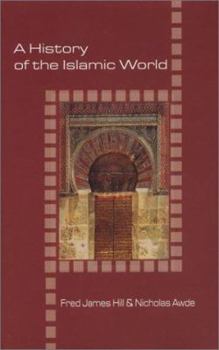A Guide to the Islamic World
This concise depiction of the Islamic world features developments from the time of Muhammad and the rise of Islam in the seventh century to the complex political map of today. It clearly outlines and... This description may be from another edition of this product.
Format:Hardcover
Language:English
ISBN:0781810159
ISBN13:9780781810159
Release Date:October 2003
Publisher:Hippocrene Books
Length:221 Pages
Weight:0.98 lbs.
Dimensions:0.8" x 5.6" x 8.7"
Customer Reviews
1 rating
Educational and interesting
Published by Thriftbooks.com User , 19 years ago
Some of the problems that many Western readers have when confronting a topic such as the history of Islam include difficult names for people (to the Western ear), unfamiliar place names (some less unfamiliar now due to the Western attention focussed upon the Middle East at present), and unusual theological concepts and practices that don't always neatly relate to Western ideas of philosophy and religion. Authors Fred James Hill and Nicholas Awde obviously took these difficulties into account when developing this text on the history of the Islamic world, for it is exceptionally readable and accessible to the Western audience, its intended group. Hill and Awde have written then with somewhat of a bias, which is admitted early in the text. This is both a history and a celebration of Islamic culture; whereas often history of non-Western societies is an add-on to the overall 'march of history' narratives popular in school texts and other books, this book treats Islamic history as a history in its own right. The history overlaps with the Western culture, and this is explored in good detail (particularly the Spanish Islamic period, and Eastern European/southern Russian-Asian lands), but the culture also ties in significantly with the African, Indian, and Chinese cultures in many ways. Hill and Awde develop the text chronologically in three major divisions: The Rise of Islam, the Age of Three Great Muslim Empires, and Islam in the Twentieth and Twenty-First Centuries. In the Rise of Islam, the authors begin with a brief biographical sketch of the prophet Muhammad, the four Caliphs, and the development of both the Quran and various practices and cultural identities. The rapid early expansion of Islam coincided with the so-called Dark Ages of Europe; while there was a general decline in intellectual and social society in Europe following the collapse of the Western Roman Empire, and the contraction of the Eastern Roman/Byzantine Empire, Muslim societies were in fact flourishing, with great centres of art, science, literature, philosophy and more growing throughout the Muslim world - some of these cradles of intellectual fervour helped fuel the later European Renaissance. This period saw the rise of rulers such as the Umayyads, the Abbasids, and individuals such as Saladin. In the Age of Three Great Muslim Empires, the authors explore the Ottoman, the Safavids and Shi'ism in Persia, and the Mughals in India. These three empires were to have lasting effects on world affairs economically and politically, with divisions in current affairs and nation-states dating from these particular empires. In the third section on the Twentieth and Twenty-First Centuries, the authors look at the nation-state phenomenon and how it has impacted the way Islam is practiced as well as the way that it is perceived beyond the Muslim world. Crucial to the understanding of current affairs is the understanding of the inter-Islamic relations, and what challenges fac





